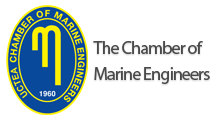

JEMS apply the Creative Commons Attribution NonCommercial 4.0 International Licence to all manuscripts to be published
Marine Engine Oil Diagnostics by Means of NMR Spectroscopy and Relaxometry of Protons
Nikolay Sinyavsky1, Ivan Mershiev21Kaliningrad State Technical University, Kaliningrad, Russia2Immanuel Kant Baltic Federal University, Kaliningrad, Russia
The goal of this work is to investigate fresh and used marine engine oil by high-resolution 1H nuclear magnetic resonance (NMR) as well as by NMR relaxometry with Laplace transform inversion. The largest decrease in the molar content of CH3 groups was observed in used 10W40 oil, from 37.7% to 27.3%, and the largest increase in the content of CH groups was observed in 15W40 engine oil, from 8.8% to 11.5%. The inversion method based on standard deviation minimization and regularization (RILT) was used to obtain the distribution of relaxation times. It is demonstrated that the bimodal distributions of the longitudinal relaxation times practically differ very little between fresh and used oils. T2 relaxation times for the used 10W40 oil (21 ms and 63 ms) shift to shorter values in the bimodal distribution when compared to fresh oil (25 ms and 89 ms). The T2 relaxation times for the used M-4015 oil increased from 14 ms and 42 ms to 19 ms and 60 ms, respectively. This indicates a change in the mobility of the functional groups of macromolecules caused by a change in the viscosity of the used oil. It is proposed to use the NMR method of proton relaxometry and the distributions of relaxation times to diagnose marine engines using used motor oil.
Keywords: Marine motor oils, Diagnostics, NMRRCorresponding Author: Nikolay Sinyavsky, Russia
Manuscript Language: English
(423 downloaded)









